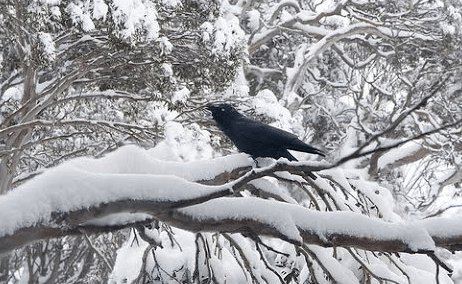NCERT Solutions for Class 10 English First Flight Chapter 1 - Dust of Snow
Thinking about the Poem
This poem presents a moment that seems simple, but has a larger significance.
[Compare this other quotation from Robert Frost: “Always, always a larger significance... A little thing touches a larger thing.”]
Q1. What is a “dust of snow”? What does the poet say has changed his mood? How has the poet’s mood changed?
Ans: A “dust of snow” means the fine particles of snow. This “dust of snow” changed the poet’s mood. The poet’s mood changed from one of dismay to joy. He was holding the day in regret when this dust of snow fell on him, and this simple little thing brought him some joy. Dust of SnowQ2. How does Frost present nature in this poem? The following questions may help you to think of an answer.
Dust of SnowQ2. How does Frost present nature in this poem? The following questions may help you to think of an answer.
(i) What are the birds that are usually named in poems? Do you think a crow is often mentioned in poems? What images come to your mind when you think of a crow?
(ii) Again, what is “a hemlock tree”? Why doesn’t the poet write about a more ‘beautiful’ tree such as a maple, or an oak, or a pine?
(iii) What do the ‘crow’ and ‘hemlock’ represent − joy or sorrow? What does the dust of snow that the crow shakes off a hemlock tree stand for?
Ans:
(i) Frost has presented nature in quite an unconventional manner. While in other nature poems we come across birds such as nightingales or sparrows, Frost has used a crow in this poem. A crow can be associated with something dark, black, and foreboding. That is why other poets usually mention singing nightingales or beautiful white doves in their poems.
(ii) The poet has written about a hemlock tree, which is a poisonous tree. He has not written about a more beautiful tree such as a maple, or oak, or pine because these trees symbolise beauty and happiness. Frost wanted to symbolise the feelings of sadness and regret, which is why he has used a hemlock tree.
(iii) The crow and the hemlock tree represent sorrow. The dust of snow that is shaken off the hemlock tree by the crow stands for joy that Frost experiences. He has, therefore, used an unconventional tree and bird in order to contrast them with joy in the form of snow.
Q3. Have there been times when you felt depressed or hopeless? Have you experienced a similar moment that changed your mood that day?
Ans: There have been innumerable times when I too have felt depressed and hopeless. Sometimes, such moments were aroused by other people’s behaviour and attitude and sometimes due to my own conduct. On one occasion when I was very upset. I went out for a walk. While walking in the park, I saw a girl playing with a puppy, embracing and feeding him. This little joy that they shared changed my mood and I felt very happy for the rest of the day. I also joined the two and played with them.
|
61 videos|620 docs|69 tests
|
FAQs on NCERT Solutions for Class 10 English First Flight Chapter 1 - Dust of Snow
| 1. What is the central theme of the poem "Dust of Snow"? |  |
| 2. How does the poet use imagery in "Dust of Snow"? |  |
| 3. What significance does the hemlock tree hold in the poem? |  |
| 4. How does the poem reflect the poet's attitude towards life? |  |
| 5. What is the significance of the poem's title "Dust of Snow"? |  |






















